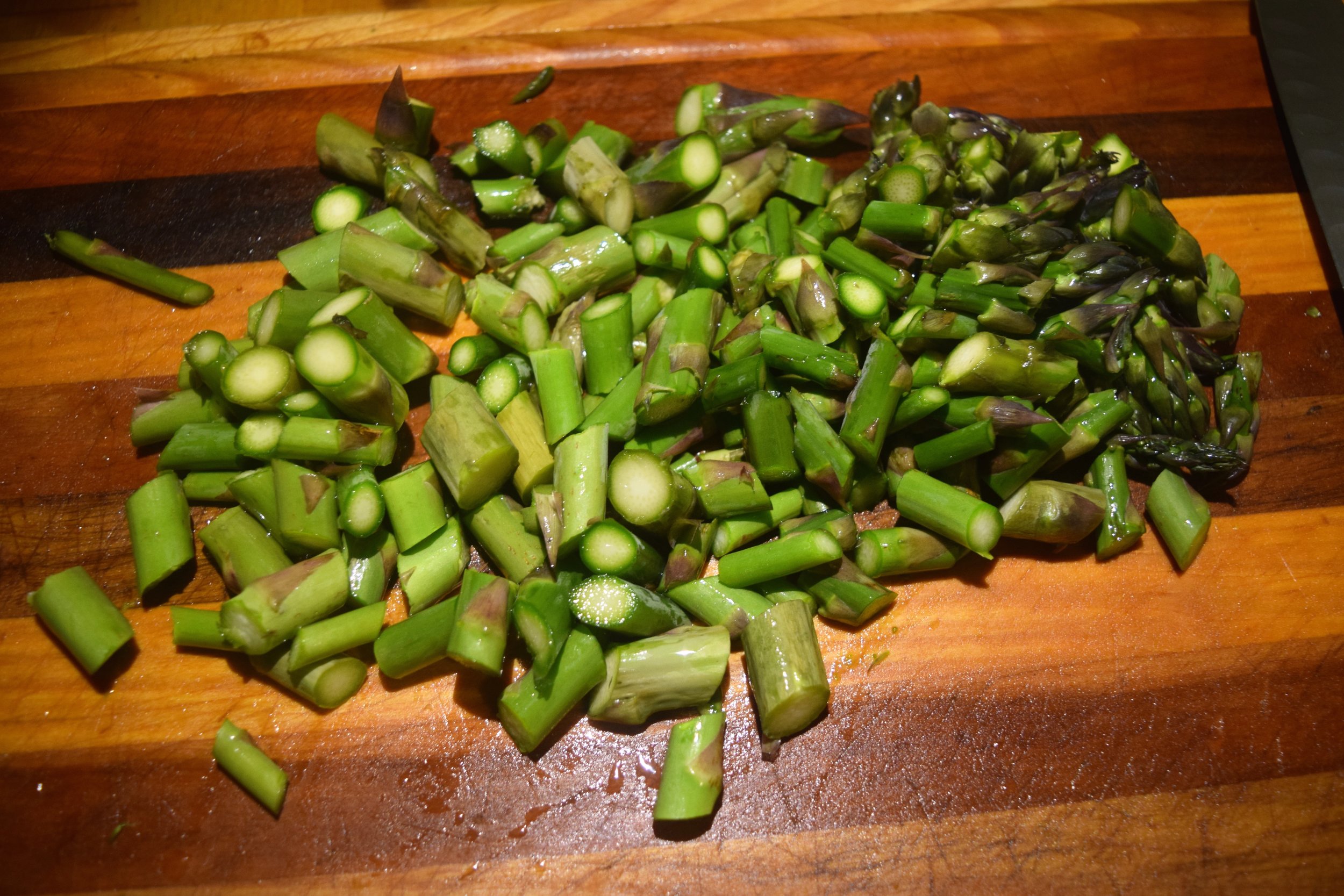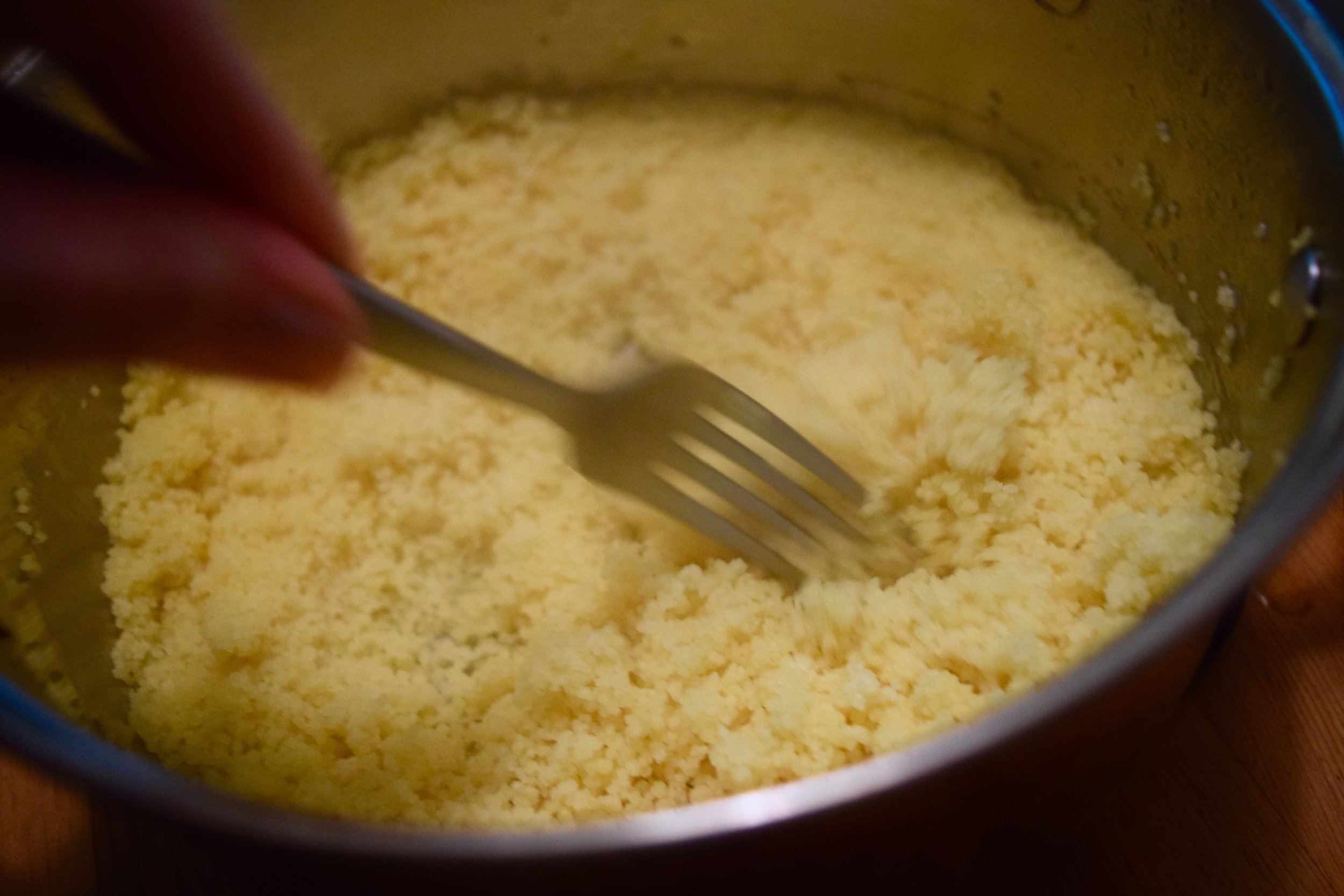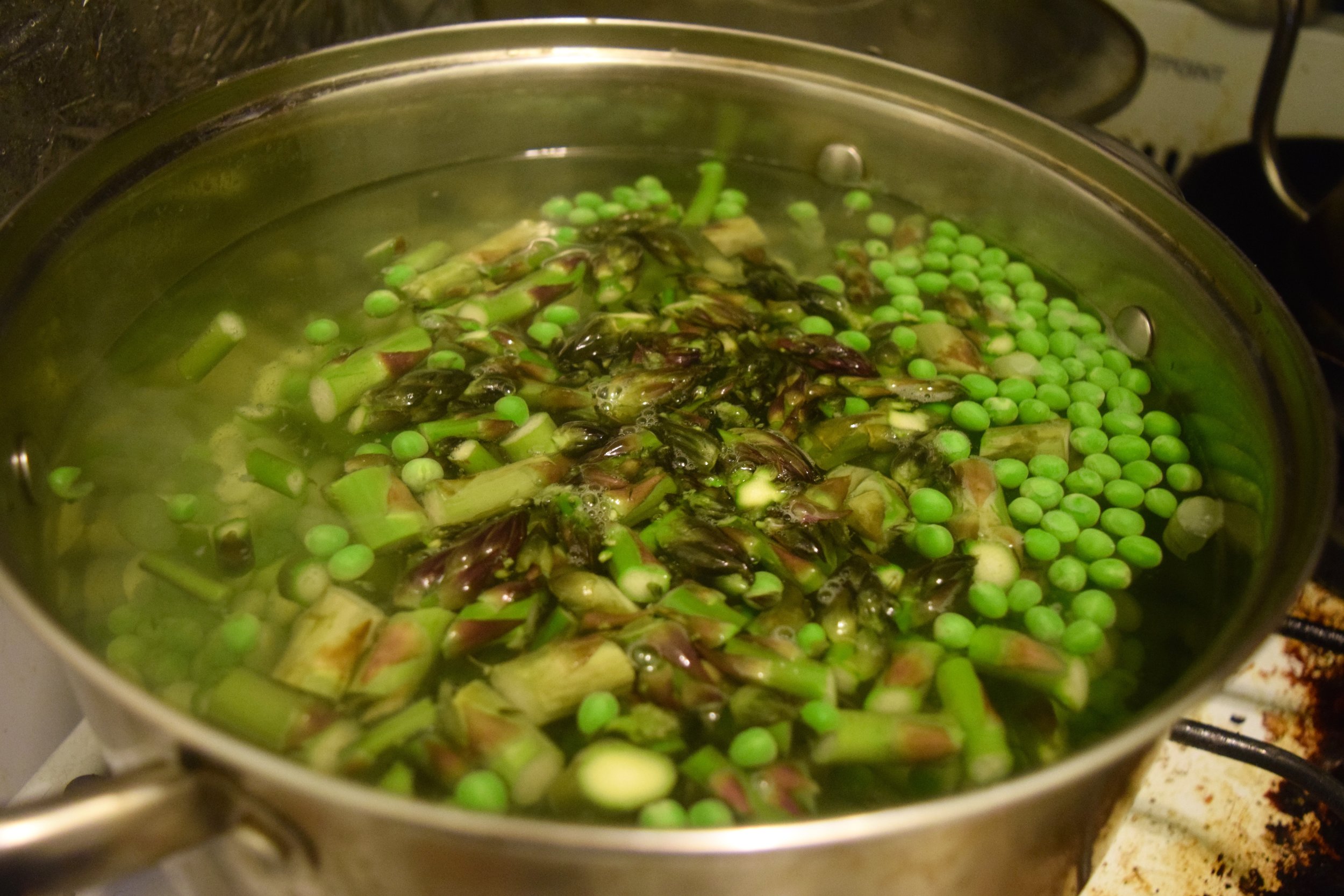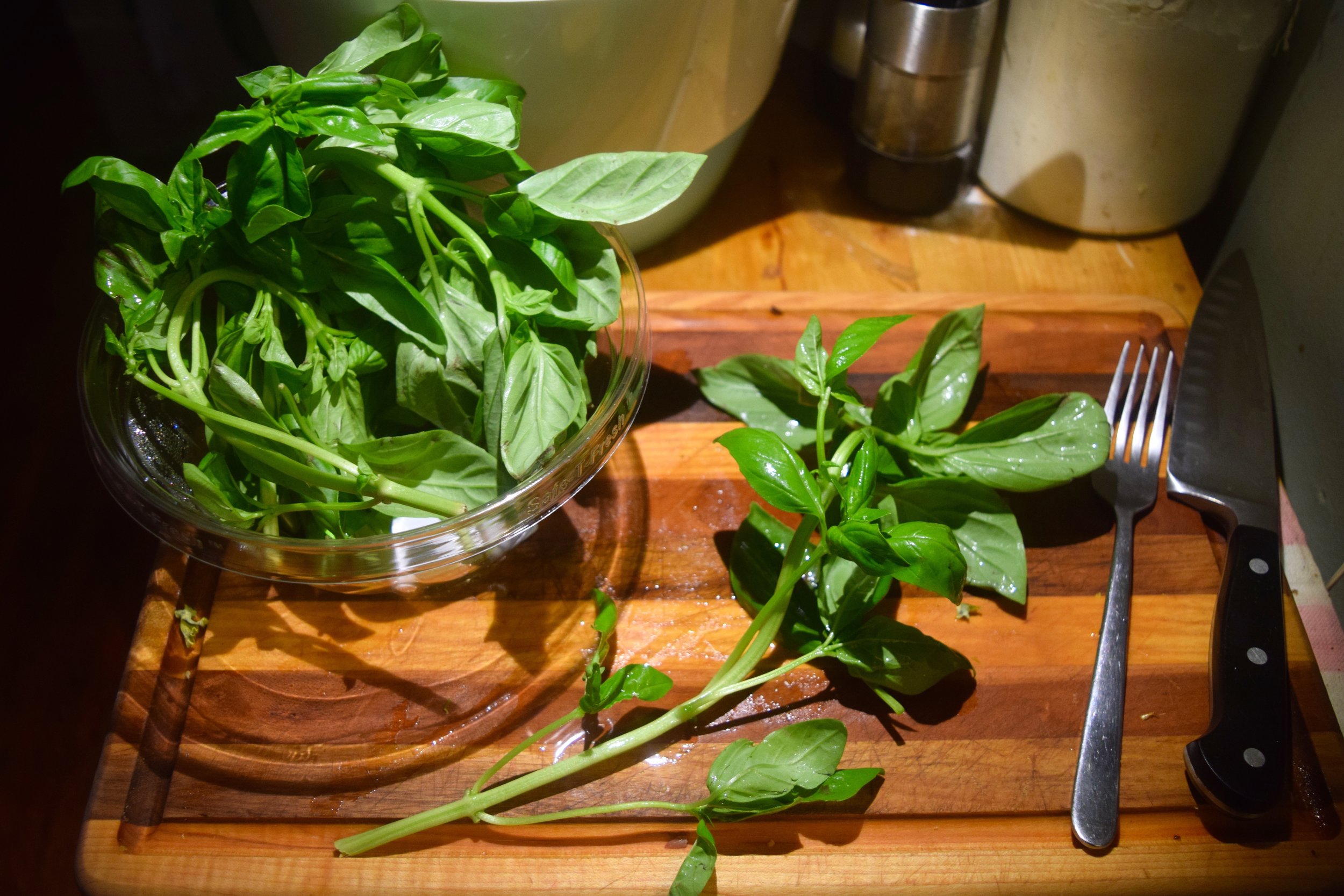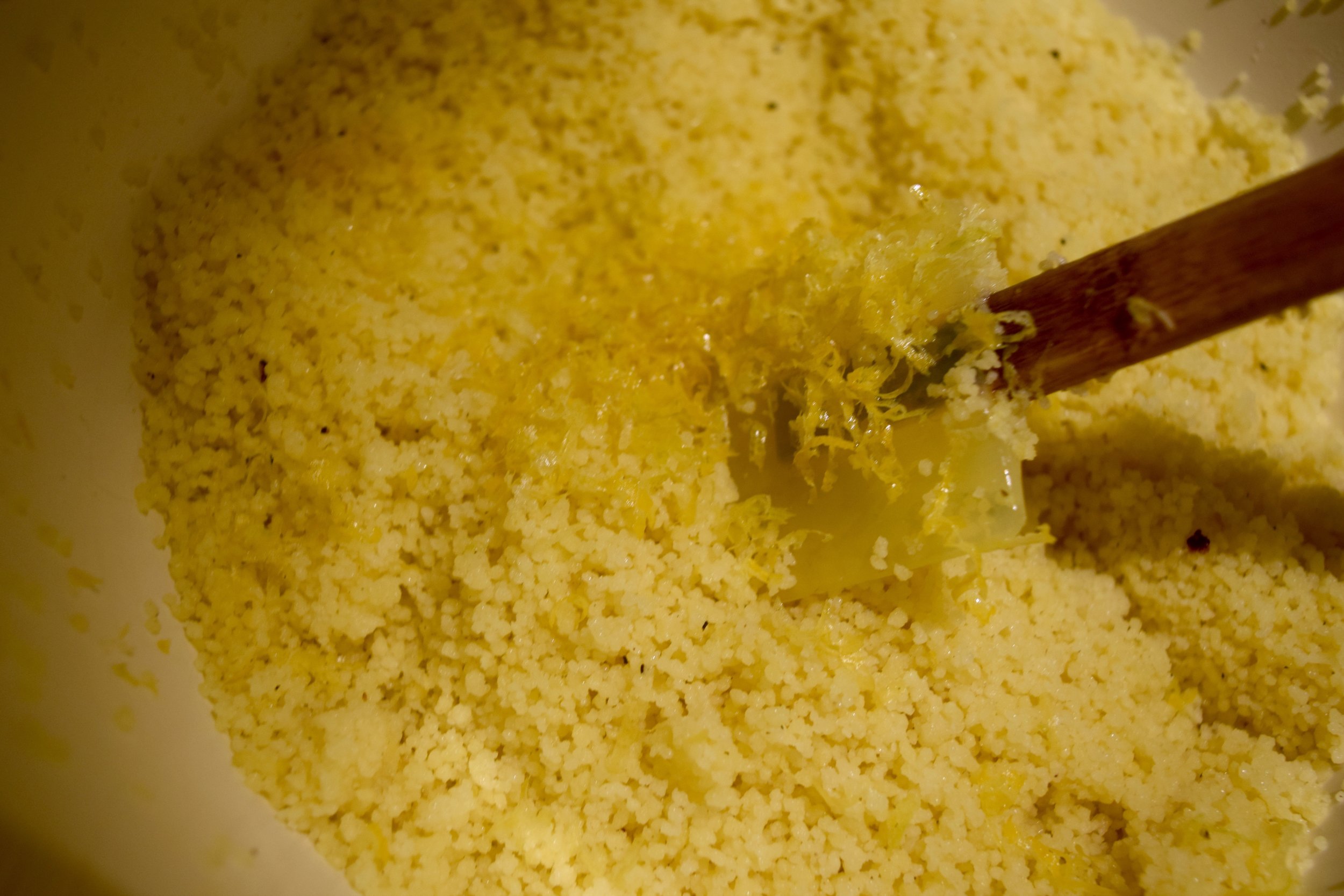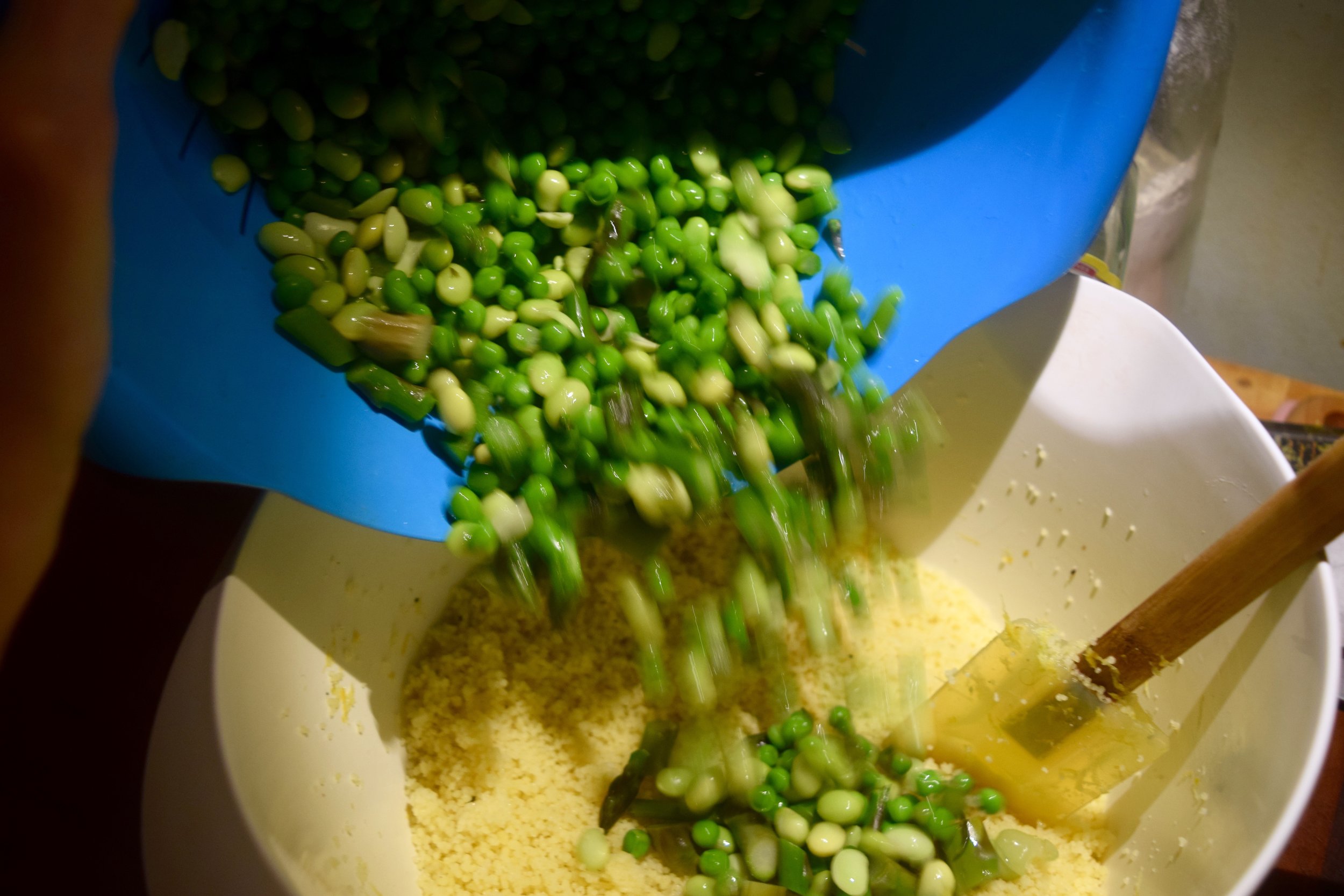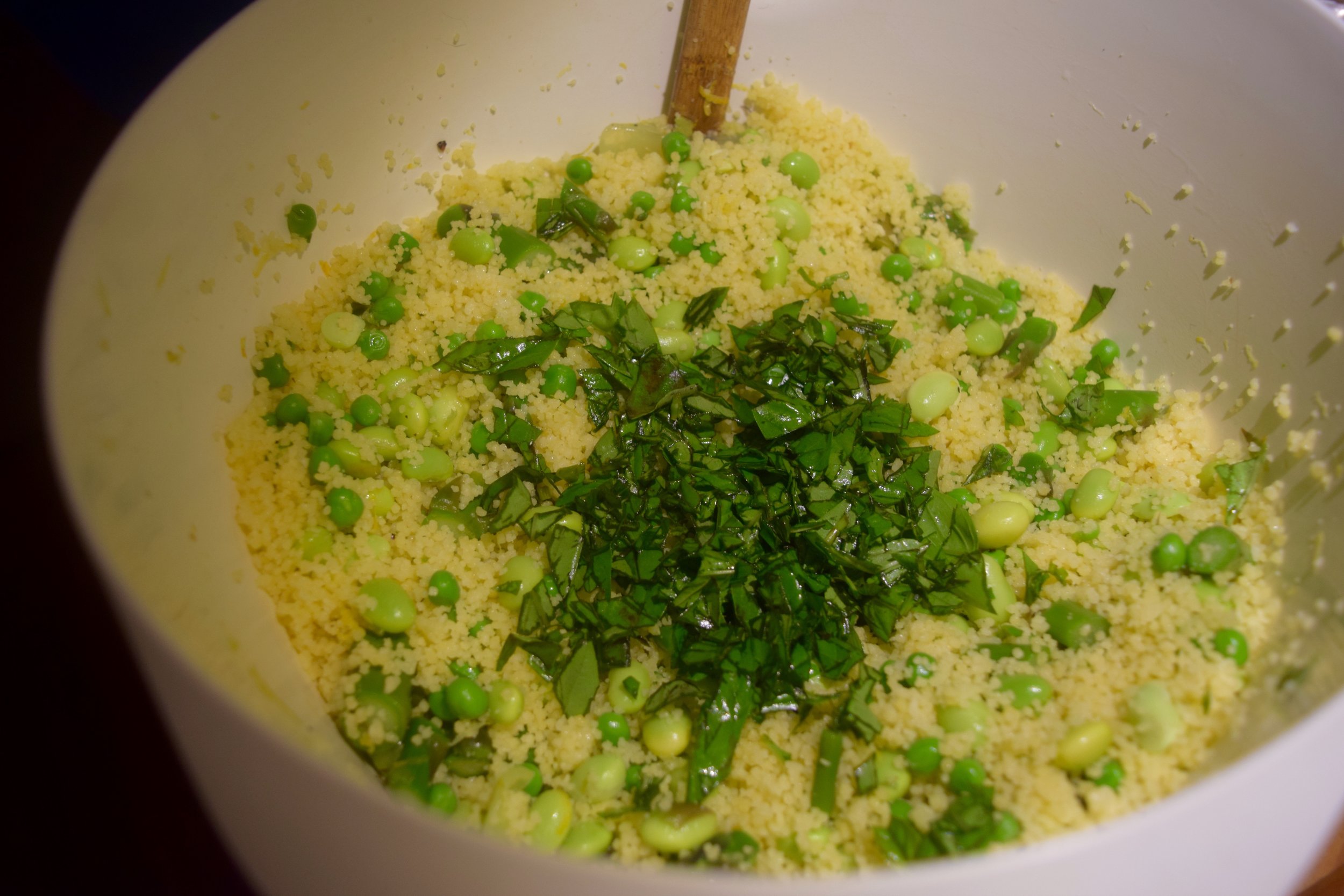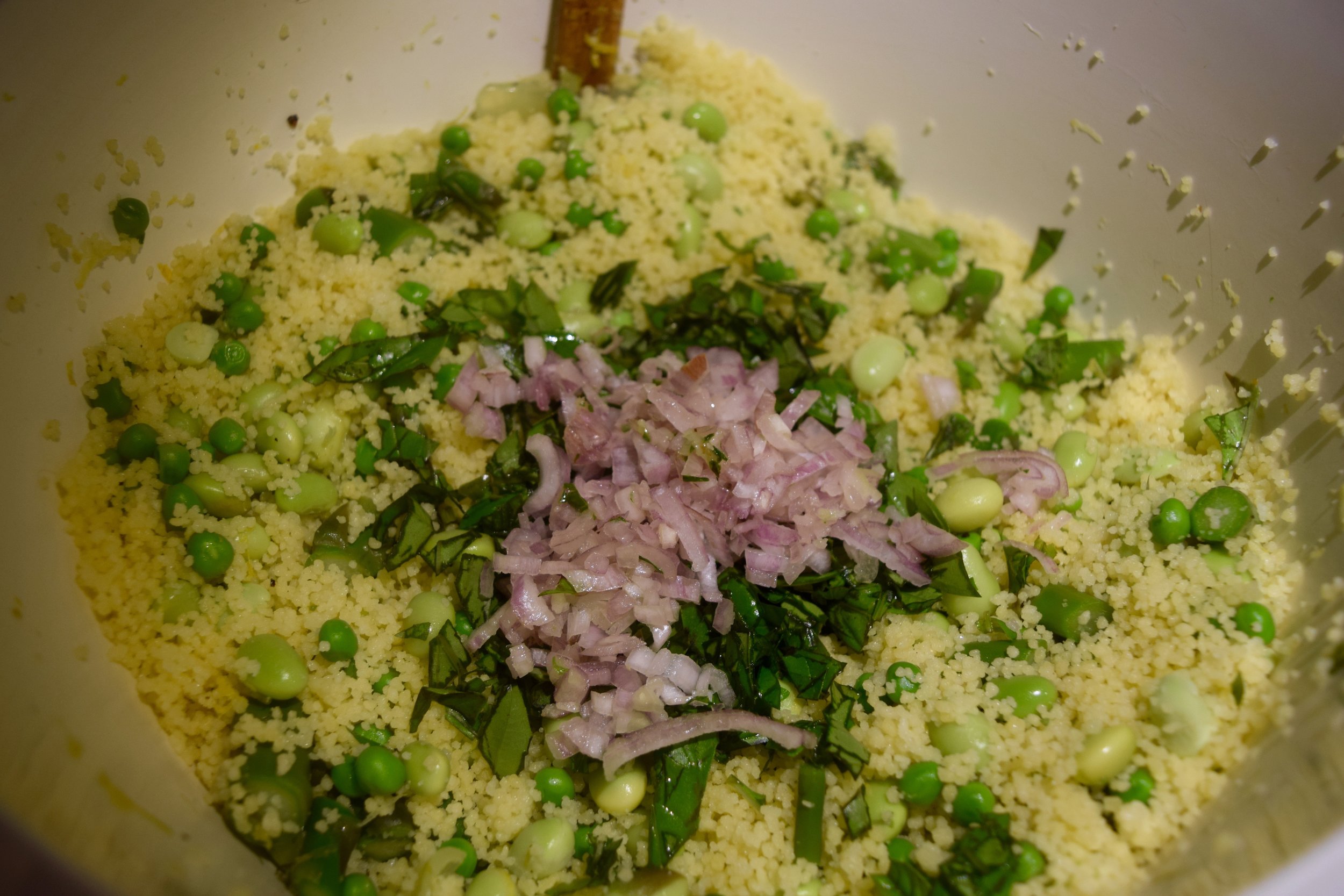This recipe is what I am often eating for lunch or dinner in the summer months. It is cool, healthy, filling, and will last all week. The variations for how to make this are essentially infinite. You can pretty much use any vegetable of your choosing. Here I stick with springy peas, asparagus, and edamame, but I often throw in some raw minced kale as well. I find that julienned mint leaves add a really fresh element to this dish if you happen to have some on hand, though I did not this particular time. You can also skip the citrus if that’s not your preference, but I find it makes the dish bright and even more crave-able. In fact, in this instance I even used lemon olive oil instead of plain, which gave the couscous a nice citrusy aroma. The goat cheese is completely optional, but let’s be honest, is there anything cheese doesn’t improve? There’s also no reason why plain greek yogurt, or a yogurt based sauce, wouldn’t pair just as nicely.
In any case, this is really just a simple, dressing free pasta salad! It would be great, I’m certain, tossed with a basil vinaigrette or with a drizzle of balsamic vinegar. But most often I simply scoop some of this into a bowl, drizzle it with a bit of good olive oil, add a sprinkle of flaky sea salt, and top it with a pinch or two of goat cheese. It’s got enough flavor and good, nutritional things in it that I don’t seem to get bored of this dish and find I can eat it happily all week long.
The proportions, as I’ve written this recipe, make a ton of pasta salad! If you wanted to start with simply one cup of couscous, you could just use half of your frozen and fresh vegetables and save the rest to toss into a stir fry or for some other purpose! As I said, it’s very customizable and couscous is the least fussy thing to prepare, so experiment away!
Spring Couscous
- 2 cups Couscous
- 2 TB Olive Oil
- 1 tsp Salt
- 1 box frozen Garden Peas
- 1 bag frozen shelled Edamame
- 1 bunch of Asparagus
- 1 shallot
- ¼ cup chopped Basil
- Zest and juice of 1 Lemon
- Goat Cheese to taste!
Bring two cups of water to a boil. Add in the teaspoon of salt. Add in your couscous and 2 tablespoons of olive oil, stir quickly and then immediately cover the couscous with a lid and turn off the heat. Leave covered for a full 5 minutes, until all liquid is absorbed and the couscous is fully cooked. Once cooked, use a fork to fluff the couscous gently until it is completely loose and there are no large, solid chunks.
While the couscous is cooling down, get a large pot of salted water boiling for the vegetables. While you wait for the water to boil, you can prepare your ice bath by filling a bowl with ice and chilled water.
Once the water is boiling, add in your frozen edamame and peas. The packages for these both recommend around 5 minutes of cooking time. I allow the water to come back to a boil, and then wait about 3 minutes before adding in my fresh asparagus. Allow to come back to a boil, wait 2 minutes, and then immediately drain and dump the vegetables into the ice bath.
Stir the vegetables in the ice bath to insure they are fully cooled down. This process is called shocking and will ensure that the vegetables keep their nice bright green color for longer. If the ice isn't cold enough, you can also cool the vegetables by rinsing continually with cold water.
Drain the shocked vegetables and set aside.
Zest your lemon and add the zest to the fluffed, cooled couscous.
Add the vegetables to the couscous and stir thoroughly.
Julienne the basil and add it to the couscous.
Finely mince one shallot and add it to the couscous.
Squeeze the juice of your lemon over the couscous (being careful not to add in any accidental seeds) and stir until fully incorporated. Add salt and pepper to taste. Optional: you could also add a good splash or so of olive oil.
To serve: add desired amount of couscous to a bowl, top with a drizzle of olive oil, pinch of sea salt, and fresh goat cheese.



